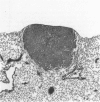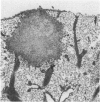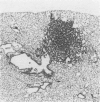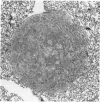Abstract
To test the feasibility of employing a combined lung adenoma/skin papilloma assay for broader detection of chemical carcinogenesis than that realized with either bioassay done separately, four strains of mice, SENCAR, BALB/c, A/J, and ICR-Swiss, were administered carcinogens either by the oral or intraperitoneal (IP) routes. The carcinogens administered were ethyl carbamate (EC), benzo(a)pyrene [B(a)P], N-[4-(5-nitro-2-furyl)thiazolyl]formamide (FANFT), and acrylamide (ACR). Starting 2 weeks later, 1 to 5 micrograms (depending on strain) of 12-O-tetradecanoylphorbol-13-acetate (TPA) in 0.2 mL acetone/mouse was applied three times weekly to the shaved back for 20 weeks. All strains displayed increases in the yield of lung adenomas in response to EC at 32 weeks. B(a)P increased lung adenomas in only the SENCAR and A/J strain. Only the SENCAR and ICR-Swiss mice gave positive responses in the skin. In the SENCAR mice, positive response was seen with all four chemicals, however, FANFT gave an inconsistent response. The ICR-Swiss mice responded with an increased skin papilloma yield only to EC. In a separate experiment involving only SENCAR mice, animals were treated with a single oral dose of diethylnitrosamine (DEN) followed by triweekly application of 1.0 microgram TPA. This treatment resulted in 51/57 animals developing lung adenomas vs. 5/57 in the control animals. No treatment-related skin tumors resulted with DEN. Histopathologically confirmed lesions indicate that the spectrum of chemicals detected in the SENCAR mouse may be broadened using a combined bioassay that examines both lung and skin responses.
Full text
PDF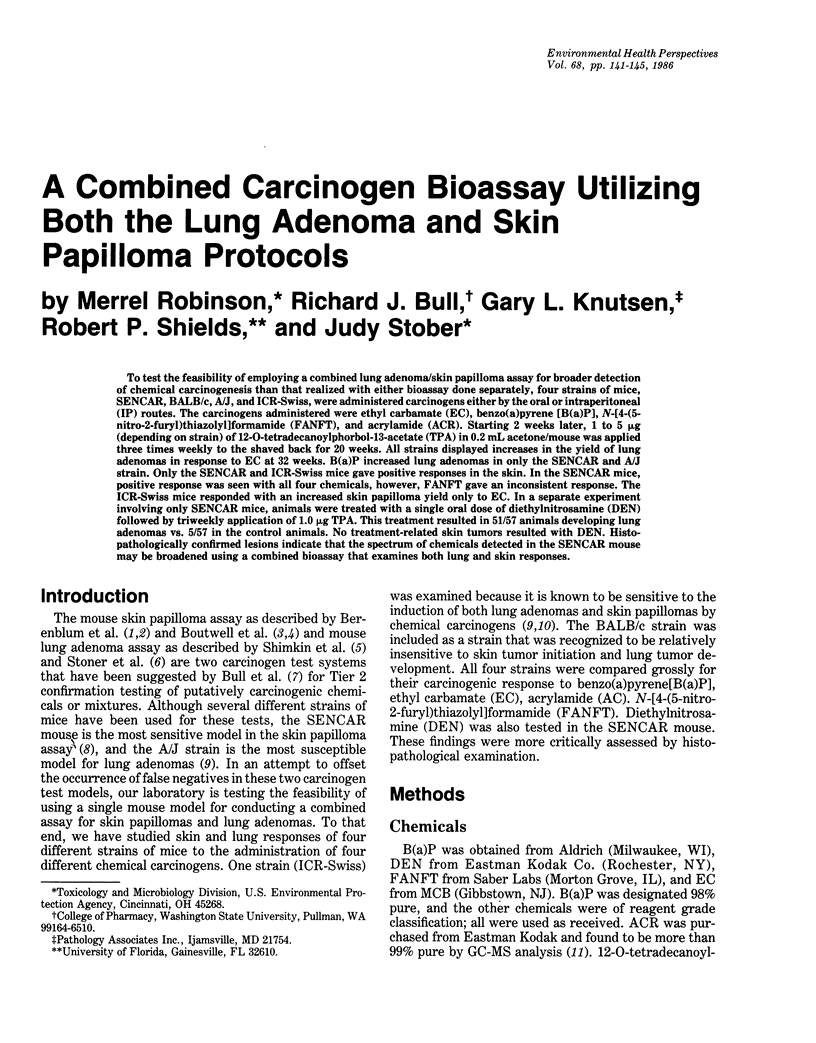
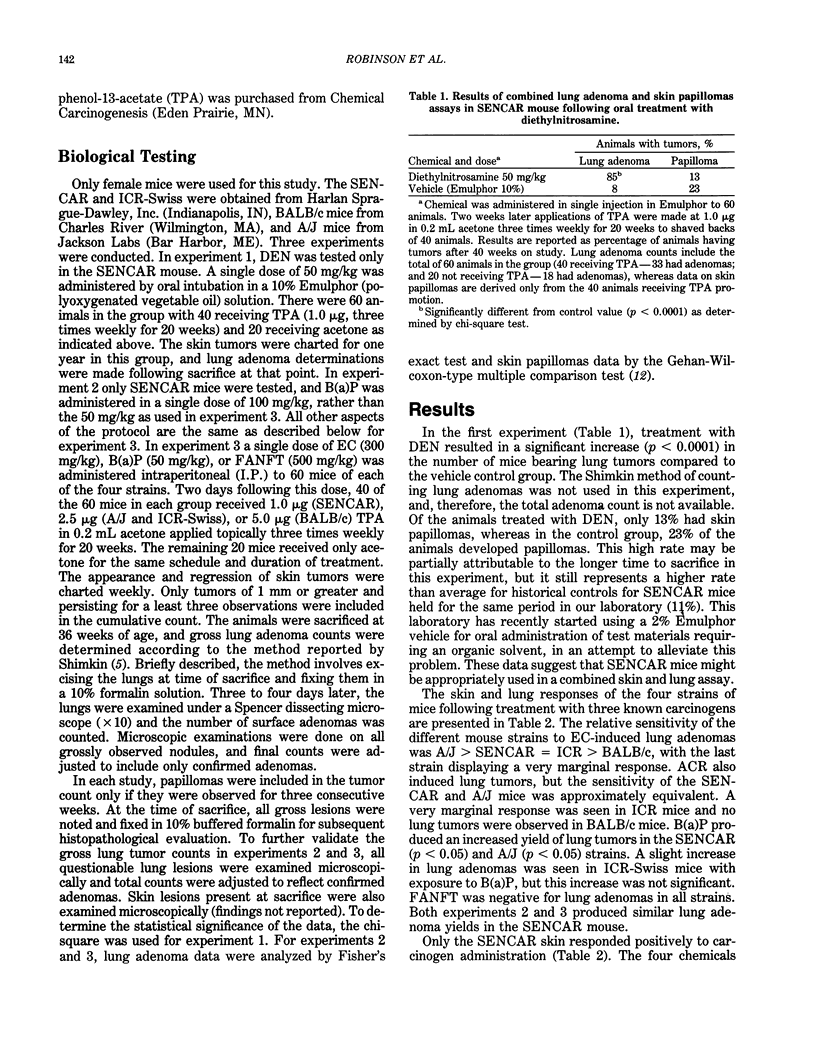
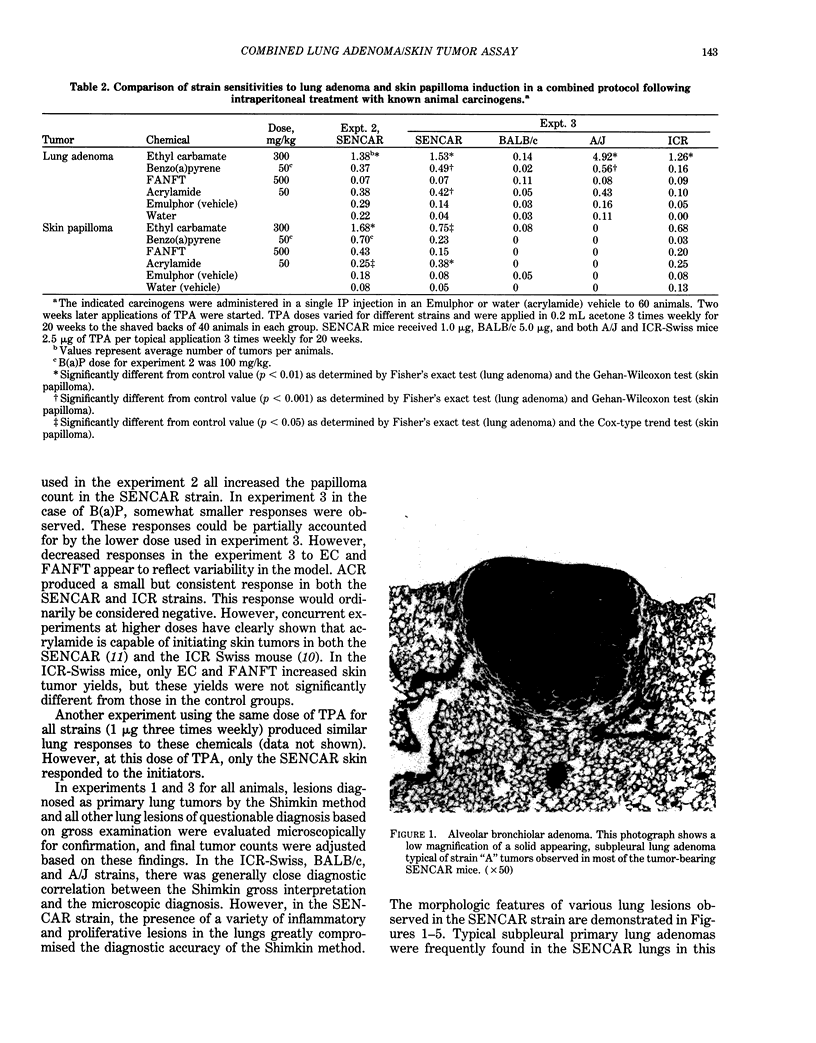
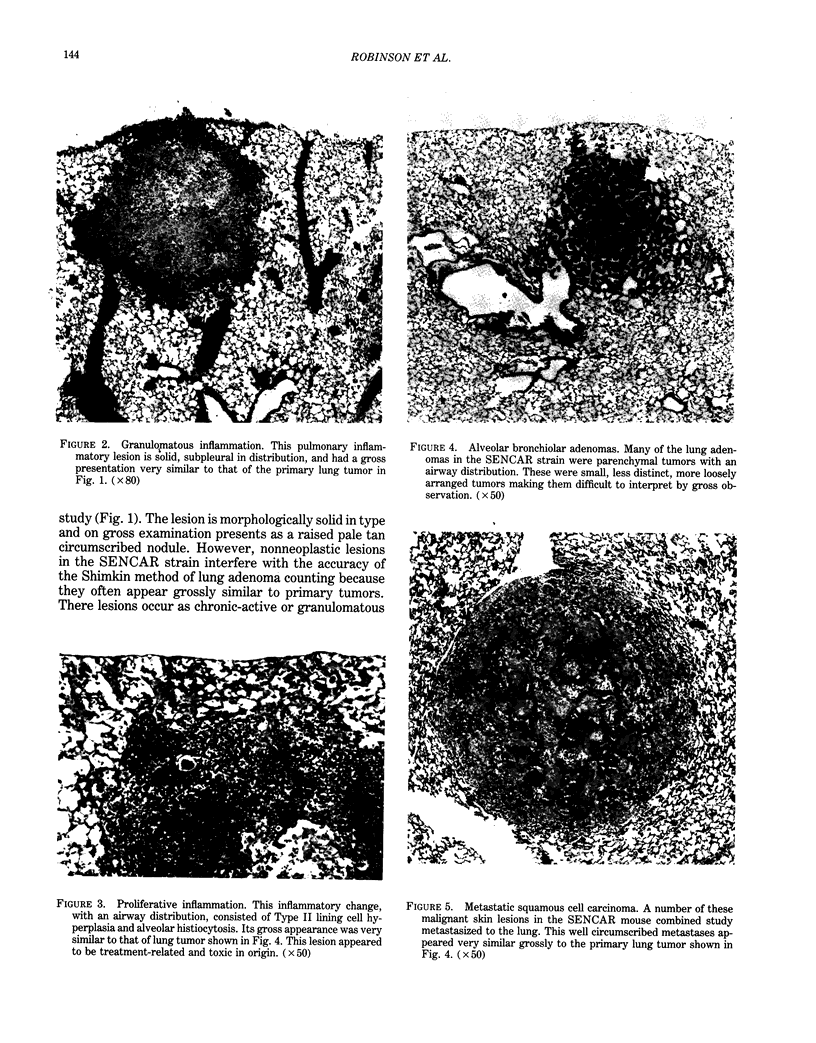
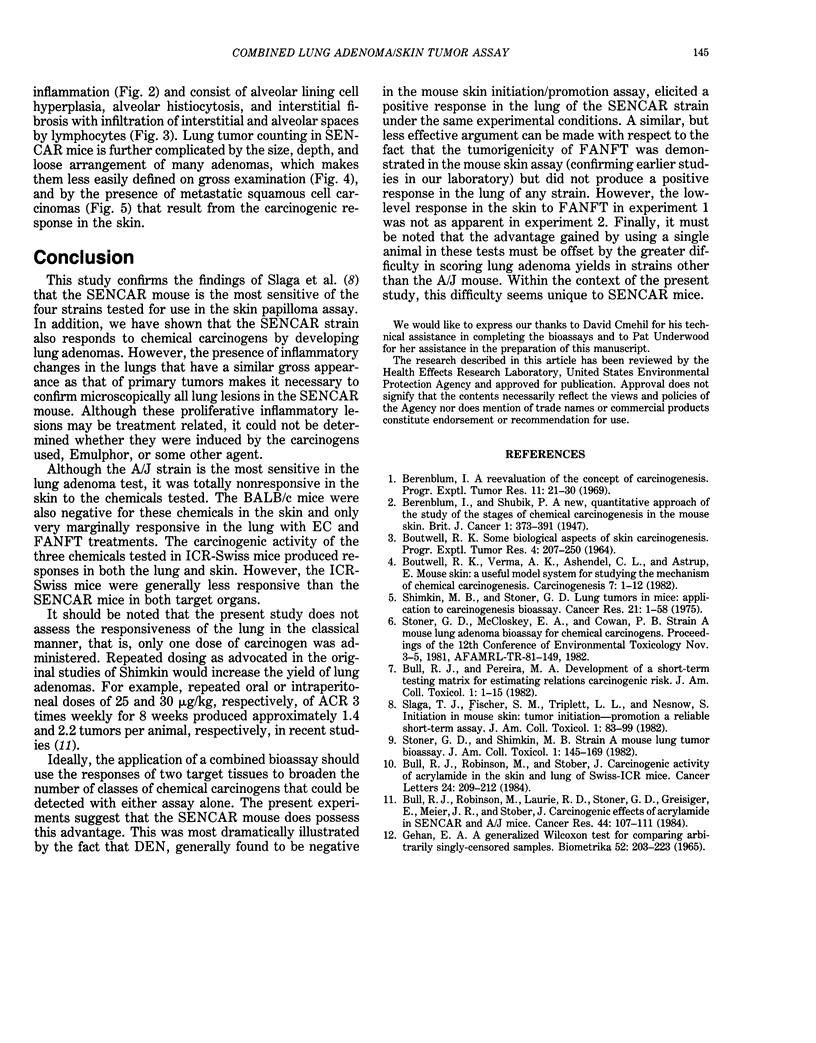
Images in this article
Selected References
These references are in PubMed. This may not be the complete list of references from this article.
- BOUTWELL R. K. SOME BIOLOGICAL ASPECTS OF SKIN CARCINOGENISIS. Prog Exp Tumor Res. 1964;4:207–250. doi: 10.1159/000385978. [DOI] [PubMed] [Google Scholar]
- Berenblum I. A re-evaluation of the concept of cocarciongenesis. Prog Exp Tumor Res. 1969;11:21–30. doi: 10.1159/000391387. [DOI] [PubMed] [Google Scholar]
- Bull R. J., Robinson M., Laurie R. D., Stoner G. D., Greisiger E., Meier J. R., Stober J. Carcinogenic effects of acrylamide in Sencar and A/J mice. Cancer Res. 1984 Jan;44(1):107–111. [PubMed] [Google Scholar]
- Bull R. J., Robinson M., Stober J. A. Carcinogenic activity of acrylamide in the skin and lung of Swiss-ICR mice. Cancer Lett. 1984 Sep;24(2):209–212. doi: 10.1016/0304-3835(84)90138-1. [DOI] [PubMed] [Google Scholar]
- GEHAN E. A. A GENERALIZED WILCOXON TEST FOR COMPARING ARBITRARILY SINGLY-CENSORED SAMPLES. Biometrika. 1965 Jun;52:203–223. [PubMed] [Google Scholar]
- Shimkin M. B., Stoner G. D. Lung tumors in mice: application to carcinogenesis bioassay. Adv Cancer Res. 1975;21:1–58. doi: 10.1016/s0065-230x(08)60970-7. [DOI] [PubMed] [Google Scholar]



